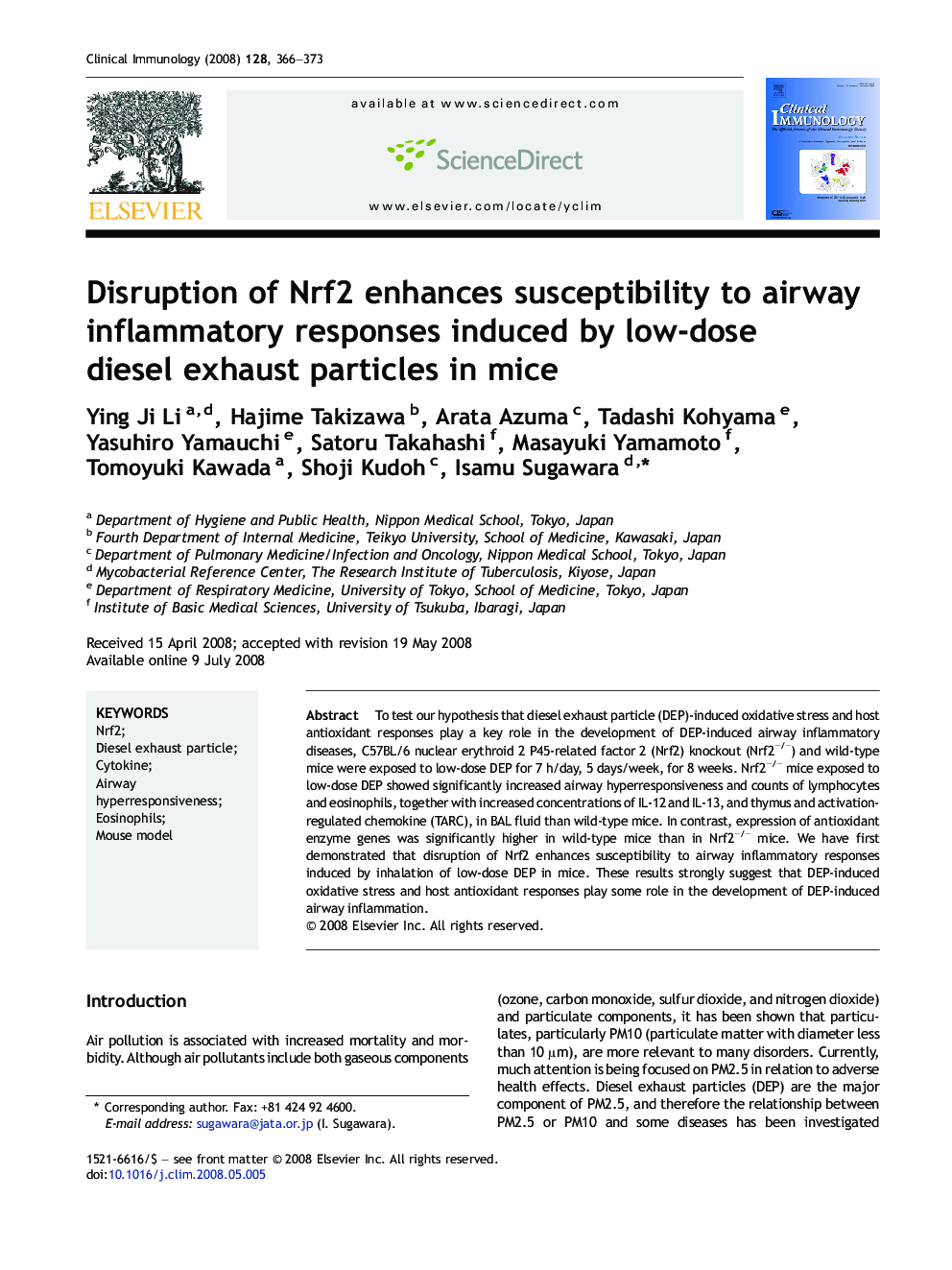| Article ID | Journal | Published Year | Pages | File Type |
|---|---|---|---|---|
| 3258274 | Clinical Immunology | 2008 | 8 Pages |
To test our hypothesis that diesel exhaust particle (DEP)-induced oxidative stress and host antioxidant responses play a key role in the development of DEP-induced airway inflammatory diseases, C57BL/6 nuclear erythroid 2 P45-related factor 2 (Nrf2) knockout (Nrf2−/−) and wild-type mice were exposed to low-dose DEP for 7 h/day, 5 days/week, for 8 weeks. Nrf2−/− mice exposed to low-dose DEP showed significantly increased airway hyperresponsiveness and counts of lymphocytes and eosinophils, together with increased concentrations of IL-12 and IL-13, and thymus and activation-regulated chemokine (TARC), in BAL fluid than wild-type mice. In contrast, expression of antioxidant enzyme genes was significantly higher in wild-type mice than in Nrf2−/− mice. We have first demonstrated that disruption of Nrf2 enhances susceptibility to airway inflammatory responses induced by inhalation of low-dose DEP in mice. These results strongly suggest that DEP-induced oxidative stress and host antioxidant responses play some role in the development of DEP-induced airway inflammation.
